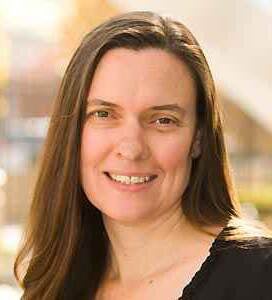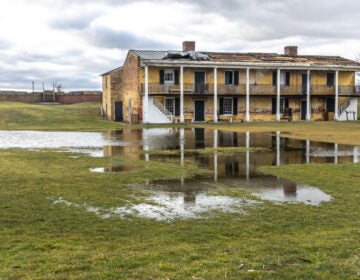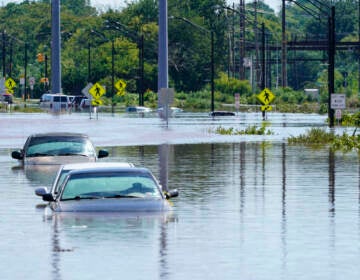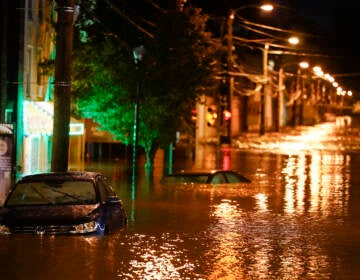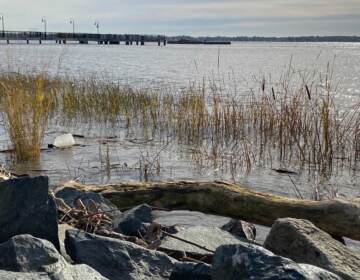An artist who grew up on the streets of Philadelphia returns with an ‘optimistic’ climate exhibit
Artist Stephen Talasnik’s bamboo sculpture tells the story of melting glaciers.
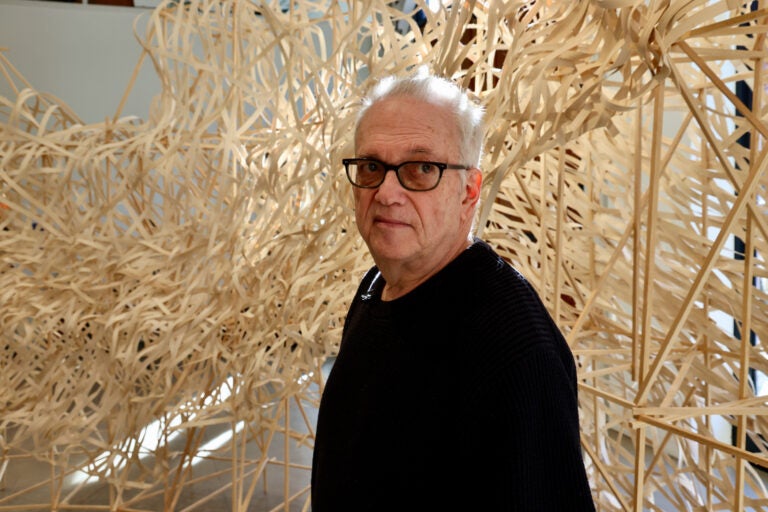
Artist Stephen Talasnik stands within his sculpture, a glacier made of wood and bamboo that was created for the exhibit ''Floe'' at the Museum for Art in Wood. (Emma Lee/WHYY)
This story is part of the WHYY News Climate Desk, bringing you news and solutions for our changing region.
From the Poconos to the Jersey Shore to the mouth of the Delaware Bay, what do you want to know about climate change? What would you like us to cover? Get in touch.
A Philadelphia-born artist wants to spur conversations about climate change through an exhibit that tells a fantastical story.
Imagine this: About 100 years ago a shipwreck became encased and preserved in a glacier. Fast forward to today, and global warming has melted the ice, shattering the boat into pieces, which children found washed up on the shores of the Delaware River.
View this post on Instagram
Artist Stephen Talasnik’s new work at the Museum for Art in Wood in Old City features a bamboo sculpture that imagines this glacier along with a debris field made from wood and epoxy.
It’s the first climate-related exhibit at the museum, where Talasnik, who grew up in Southwest Philadelphia but now lives in New York, recently spoke to WHYY News about the origins of “Floe: A Climate of Risk, the Fictional Archeology of Stephen Talasnik.”
“I was attracted to icebergs and have been interested in icebergs for the better part of the last 25 years after experiencing my first real iceberg in person when I visited Newfoundland,” said Talasnik.
At the time, he said he didn’t think it was unusual to see an iceberg floating off the coast of Newfoundland.
“But the people that lived there knew that it was problematic and that was 25 years ago, it had cut off the fishing industry for one.”
Talasnik is curious about how children respond to his work.
“Because kids that grow up in the streets of Philadelphia don’t necessarily have the opportunity to look at an iceberg,” he said. “But they’ve seen photographs of icebergs and they’ve seen movies on TV or segments where [glaciers] are melting. And they [may] ask a question, ‘why is this important for me?’”
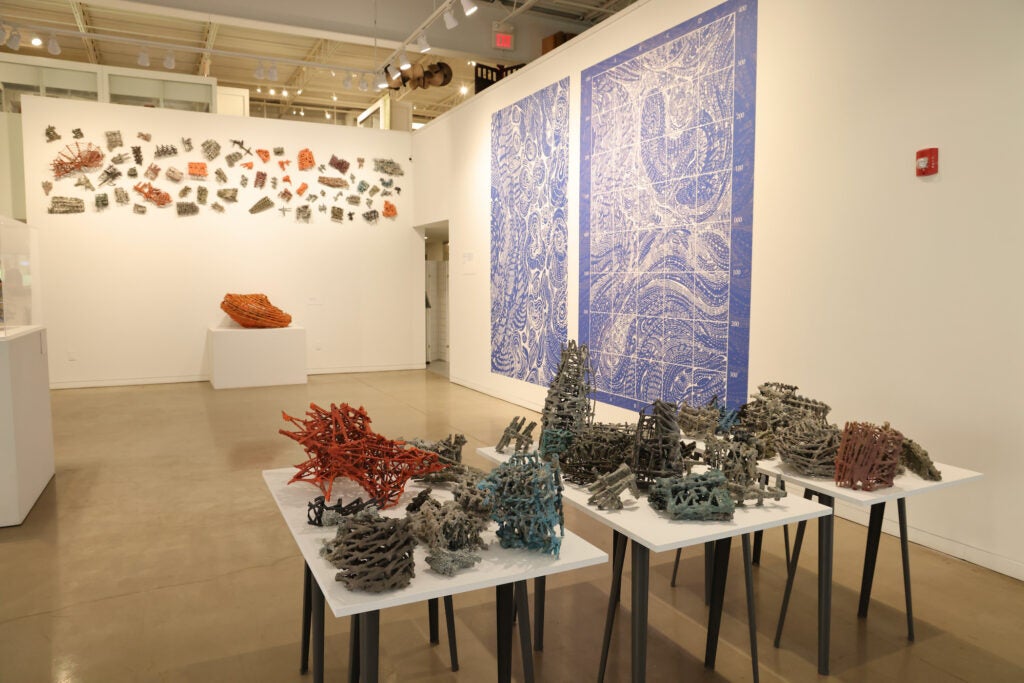
Talasnik says stories are just as important as data when it comes to talking about climate.
“I’m much more interested in embracing the enigmatic side of the iceberg. And what does it symbolize? And how do we talk about this and how do we ask our children to talk about it?”
He has seen more and more artists tackle the existential issues surrounding climate change. But he said he hopes it doesn’t become so commonplace it’s “disingenuous.”
“As any [controversial] subject matter does. I think it’s easy for a lot of artists to jump on the bandwagon because it is relevant, because it impacts our daily lives and it will impact the future.”
He insists his work is optimistic.
“Because it does suggest that there’s a continuum,” he said. “I am not dealing with the science of tomorrow. I’m dealing with the artistic vision… of tomorrow. I am the adult who is looking back and I am the child that is potentially looking forward.
“Therefore, I’m always optimistic about it.”

Saturdays just got more interesting.
WHYY is your source for fact-based, in-depth journalism and information. As a nonprofit organization, we rely on financial support from readers like you. Please give today.


